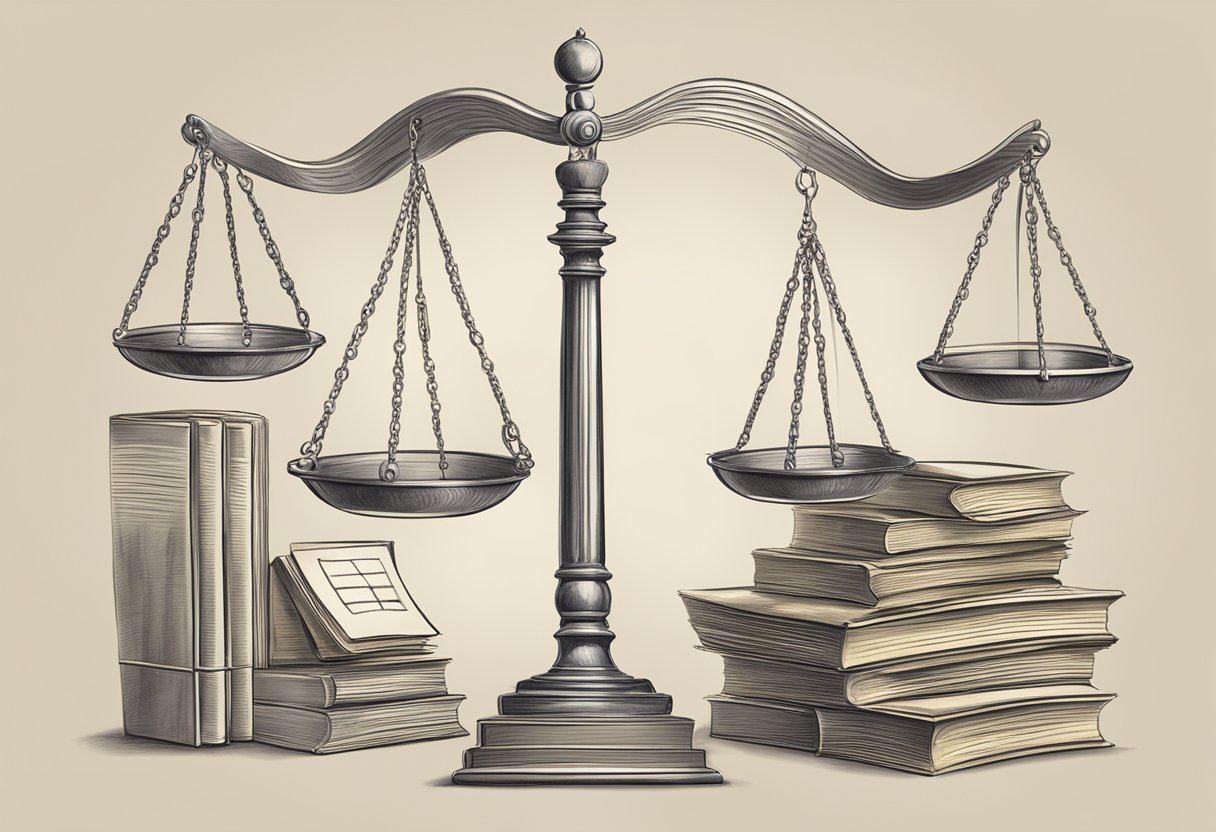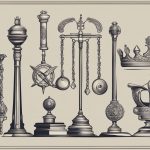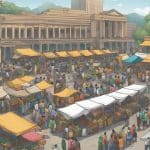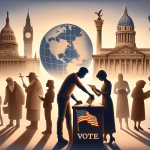Types Of Governments
Governments come in different forms, each with its own unique characteristics and methods of operation. A government is a system or group of people governing an organized community, generally a state. The system of government is the way in which power is divided and distributed within a state. Governments can be classified into different types based on the way power is distributed and exercised.
The most common types of governments are democracy, authoritarian regimes, monarchies, federal and confederate systems, and specialized government forms. Democracy is a system of government in which power is held by the people, either directly or through elected representatives. Authoritarian regimes are characterized by a single leader or small group of leaders who exercise absolute power over the state. Monarchies are governments in which a monarch, usually a king or queen, serves as the head of state. Federal and confederate systems are characterized by a division of power between a central government and smaller regional governments. Specialized government forms include theocracy, communism, and socialism, among others.
Key Takeaways
- Governments come in different forms, each with its own unique characteristics and methods of operation.
- The most common types of governments are democracy, authoritarian regimes, monarchies, federal and confederate systems, and specialized government forms.
- The system of government is the way in which power is divided and distributed within a state.
Democracy and Its Variants

Democracy is a system of government in which the power is held by the people or their elected representatives. It is characterized by the principle of political or social equality for all citizens. There are different types of democracies, including direct democracy, representative democracy, and constitutional democracy.
Direct Democracy
Direct democracy is a form of democracy in which citizens directly participate in the decision-making process. It is also known as pure democracy. In a direct democracy, citizens vote on every issue that affects them. This form of democracy is best suited for small communities where people can gather and discuss issues. However, it is not practical for large communities or countries.
Representative Democracy
Representative democracy is a form of democracy in which citizens elect representatives to make decisions on their behalf. It is also known as an indirect democracy. In a representative democracy, citizens have the right to vote for their representatives who will then make decisions on their behalf. This form of democracy is best suited for large communities or countries where direct democracy is not practical.
Constitutional Democracy
Constitutional democracy is a form of democracy in which the powers of the government are limited by a constitution. The constitution outlines the rights and freedoms of citizens and sets limits on the powers of the government. This form of democracy ensures that the government does not abuse its power and that the citizens’ rights are protected.
In a democratic society, citizens have the freedom to express their opinions and beliefs without fear of persecution. Political parties are an essential part of a democratic society as they represent different opinions and beliefs. Democracies promote the idea of freedom and equality for all citizens.
Democracies are prevalent in many countries around the world. However, the type of democracy varies depending on the country’s political and social structure. Understanding the different types of democracies is essential to understand how a democratic society functions.
Authoritarian Regimes
An authoritarian regime is a form of government where power is concentrated in the hands of a single leader or a small elite, who make decisions without considering the will of the people. There is no established mechanism for the transfer of executive power in authoritarian regimes, and citizens are not afforded civil liberties or political rights.
Totalitarian States
Totalitarian states are a type of authoritarian regime that seeks to control all aspects of individual life through coercion and repression. The state attempts to regulate every aspect of citizens’ lives, including their thoughts, beliefs, and behaviors. Totalitarian regimes often use propaganda, censorship, and violence to maintain control over the population.
Military Juntas
A military junta is an authoritarian regime that is run by a group of military officers who have seized power through a coup d’√©tat. Military juntas often suspend civil liberties and political rights, and use force to suppress dissent and opposition. They may also engage in corruption and human rights abuses.
One-Party Systems
One-party systems are authoritarian regimes that are run by a single political party. The ruling party holds a monopoly on political power, and there is no opposition or free press. Citizens are not allowed to participate in the political process, and the ruling party makes all decisions without consulting the people.
In summary, authoritarian regimes are characterized by a concentration of power in the hands of a single leader or small elite, and a lack of civil liberties and political rights for citizens. Totalitarian states, military juntas, and one-party systems are all examples of authoritarian regimes, each with their own distinct characteristics and methods of maintaining control.
Monarchies
Monarchy is a form of government in which a single individual, known as the monarch, has supreme authority and power. Monarchies can be classified into two types: absolute monarchy and constitutional monarchy.
Absolute Monarchy
In an absolute monarchy, the monarch has complete control over the government and the people. The monarch has the power to make laws, levy taxes, and control the military without any interference from the legislature or the judiciary. The monarch’s power is often hereditary, meaning that it is passed down from one generation to the next within a single family.
Historically, many monarchies have been absolute monarchies, where the monarch had complete control over the government and the people. Absolute monarchies were often associated with nobility, who held power and influence in the monarch’s court.
Constitutional Monarchy
In a constitutional monarchy, the monarch’s powers are limited by a constitution or a set of laws. The monarch serves as a ceremonial head of state, while the real power is held by an elected parliament or other governing body. The monarch’s role is often symbolic, and he or she acts as a unifying figure for the country.
Many modern monarchies are constitutional monarchies, where the monarch’s powers are limited by a constitution or set of laws. In these countries, the monarch often has no real political power and serves as a figurehead for the country.
Overall, monarchies have played an important role in world history, and continue to exist in various forms today. While absolute monarchies are becoming increasingly rare, constitutional monarchies remain an important part of many countries’ political systems.
Federal and Confederate Systems
Federal Republic
A federal republic is a type of government in which power is divided between a central government and constituent political units. In a federal republic, the central government has limited powers, and the constituent political units have a certain degree of autonomy. This system is often used in large countries with diverse populations, where local governments can better address the needs of their communities.
The United States is an example of a federal republic. In the US, power is divided between the federal government and the individual states. The federal government has limited powers, such as regulating interstate commerce and foreign policy, while the states have powers such as regulating intrastate commerce and education. This system allows for a balance of power between the central government and the states, preventing either from becoming too powerful.
Confederation
A confederation is a type of government in which constituent political units retain their sovereignty, and the central government has limited powers. In a confederation, the central government is usually responsible for matters such as defense and foreign policy, while the constituent political units are responsible for matters such as education and healthcare.
The European Union is an example of a confederation. In the EU, member states retain their sovereignty, and the central government has limited powers. The EU is responsible for matters such as trade and foreign policy, while member states are responsible for matters such as healthcare and education. This system allows for a balance of power between the central government and the member states, preventing either from becoming too powerful.
In a confederation, constituent political units can secede if they feel that their interests are not being adequately represented. This can lead to instability, as seen in the American Civil War, where the confederate states seceded from the federal government.
Overall, both federal republics and confederations are effective means of structuring a state. The choice between the two depends on the needs and characteristics of the state in question.
Specialized Government Forms
Theocracy
A theocracy is a form of government where religious leaders hold the highest power. In a theocracy, the laws are based on religious beliefs and principles. Theocracies exist in many different religions, including Islam, Christianity, Judaism, and Hinduism. The Vatican City is an example of a theocracy, where the Pope holds the highest power.
Oligarchy
An oligarchy is a form of government where a small group of people holds the highest power. This group is usually made up of wealthy individuals or members of a particular political party. Oligarchies can exist in both democratic and non-democratic countries. Examples of oligarchies include the former Soviet Union and modern-day Russia.
In an oligarchy, the ruling group often has control over the media and uses it to manipulate public opinion. They may also use their wealth and power to influence elections and maintain their hold on power.
Overall, specialized government forms like theocracy and oligarchy are just two examples of the many different types of government that exist in the world today. Each system has its own strengths and weaknesses, and it is up to the citizens of each country to decide which type of government is best for them.




